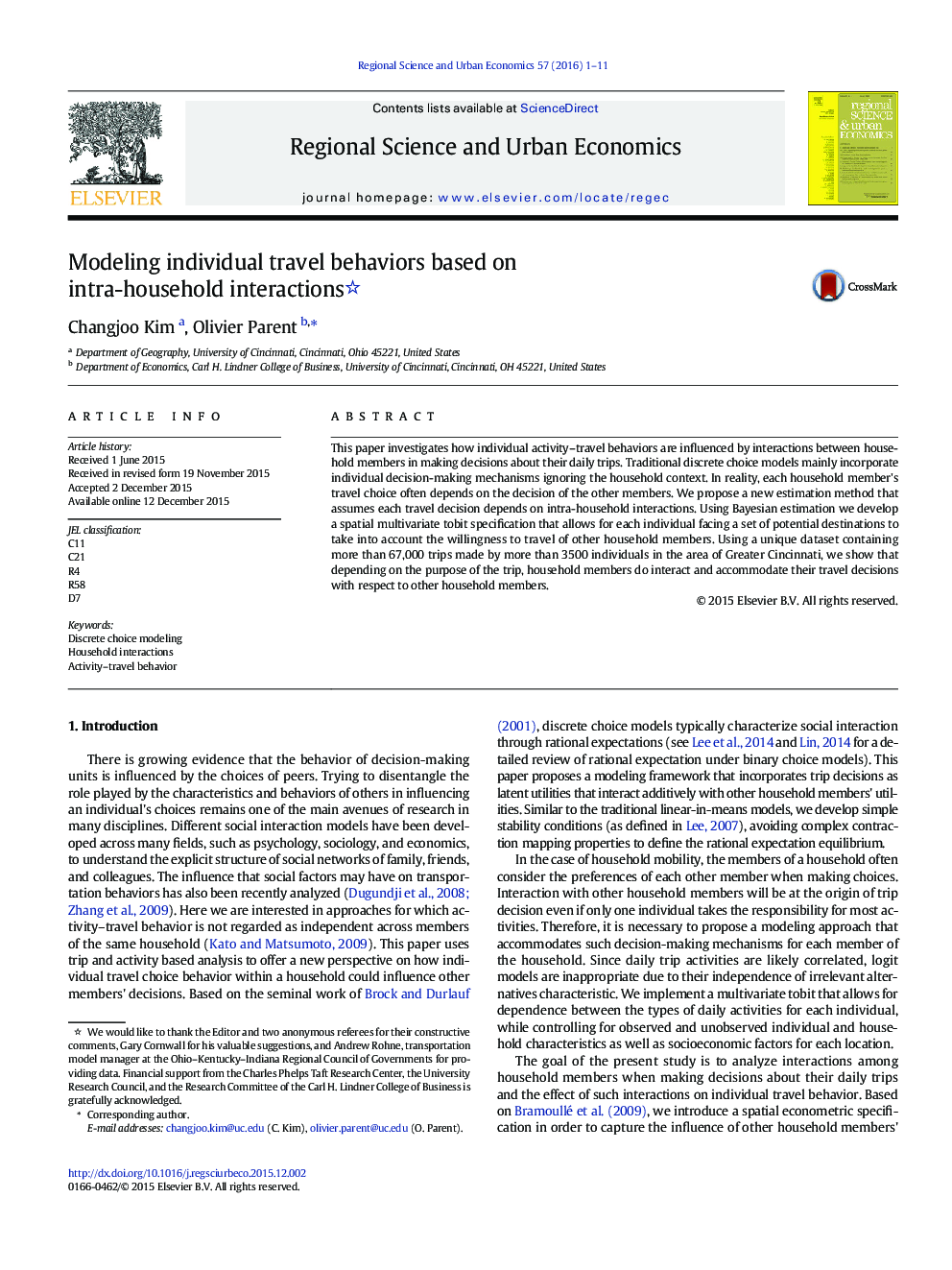| Article ID | Journal | Published Year | Pages | File Type |
|---|---|---|---|---|
| 980470 | Regional Science and Urban Economics | 2016 | 11 Pages |
•Individual activity–travel behavior is influenced by interactions between household members;•Members of the same household exert similar behavior toward trips related to shopping and school activities;•Sharing activities increases the number of trips irrespective of the associated activity type.•Increasing land use mix and mass transit accessibility tends to be effective at reducing trips.
This paper investigates how individual activity–travel behaviors are influenced by interactions between household members in making decisions about their daily trips. Traditional discrete choice models mainly incorporate individual decision-making mechanisms ignoring the household context. In reality, each household member's travel choice often depends on the decision of the other members. We propose a new estimation method that assumes each travel decision depends on intra-household interactions. Using Bayesian estimation we develop a spatial multivariate tobit specification that allows for each individual facing a set of potential destinations to take into account the willingness to travel of other household members. Using a unique dataset containing more than 67,000 trips made by more than 3500 individuals in the area of Greater Cincinnati, we show that depending on the purpose of the trip, household members do interact and accommodate their travel decisions with respect to other household members.
